12th-13th Century Syria: Ceramics (Images)
- vashtisca
- May 2, 2022
- 3 min read
From the Metropolitan Museum of Art
Click the links to go to the Met gallery and see more images of each piece.
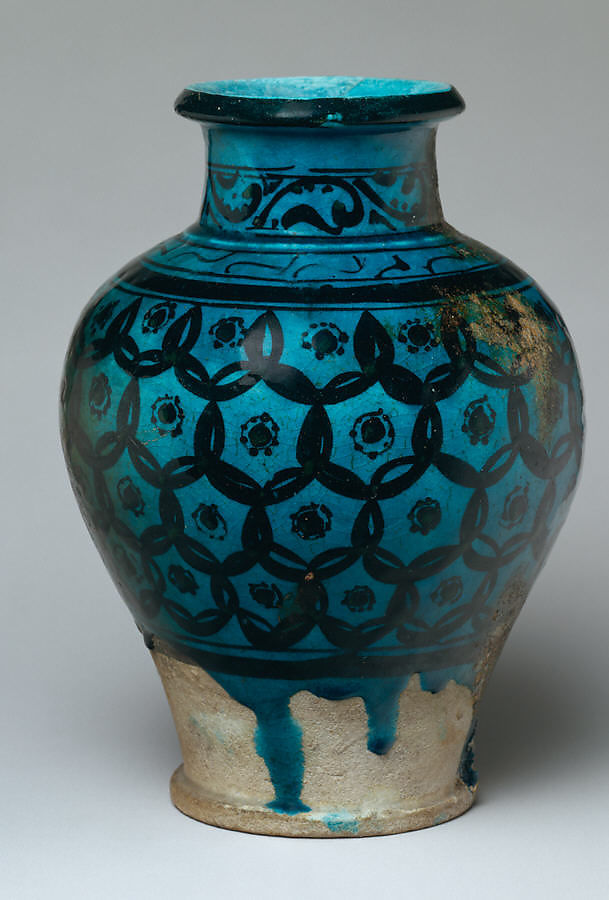
Late 12th to early 13th Century. Raqqa, Syria. Stonepaste; underglaze painted under transparent turquoise glaze. H. 11 1/2 in. (29.2 cm) Diam. 8 1/4 in. (21 cm). Accession no. 56.185.15.

Late 12th to first half of the 13th Century. Raqqa, Syria. Stonepaste; underglaze and luster-painted. H. 3 5/16 in. (8.4 cm) Diam. 12 7/16 in. (31.6 cm). Accession no. 1970.24.

Early 13th Century. Raqqa, Syria. Modeled from slabs and rolls, it resembles a square domed building, articulated at each corner by a column and finial. Stonepaste; underglaze painted in blue, luster-painted on transparent glaze. H. 9 1/8 in. (23.2 cm) W. 5 3/4in. (14.6cm). Accession no. 91.1.138.

13th Century. Syria. Stonepaste; polychrome painted under a transparent glaze. Alif-lam repeated in circular band against vegetal scroll. Alif-lam may have religious significance as a talisman. H. 2 13/16 in. (7.1 cm) Diam. 10 1/4 in. (26 cm). Accession no. 08.102.4.

First half of the 13th Century. Syria. Fritware, underglaze-painted.. Diameter: 19.7 cm. 7 ¾” diam. x 3 ½” height. Accession no. 1975.1.1753.

Late 12th to early 13th Century. Damascus, Syria. Stonepaste; polychrome painted under transparent glaze. Application of pigment oxides directly on ceramic bodies before coating with transparent glaze. Often painted in radial designs, the colors included chromium black, copper turquoise, cobalt blue, and iron oxide red. Diam. 8 7/8 in. (22.5 cm) H. 4 1/8 in. (10.5 cm). Accession no. 41.165.2.

12th-13th Century. Homs, Syria. Yellowish white earthenware; unglazed. H. 1 1/2 in. (3.8 cm) Diam. 6 5/8 in. (16.8 cm) Wt. 10.4 oz. (294.868 cm). Accession no. 28.211.
From the British Museum
Click the links to go to the Met gallery and see more images of each piece.

12th-13th Century. Syria. Ayyubid Dynasty. Small pottery jar; wheel-thrown with a low foot ring; exterior decorated with pseudo-epigraphic painted decoration. Accession No. 1887,0211.2.
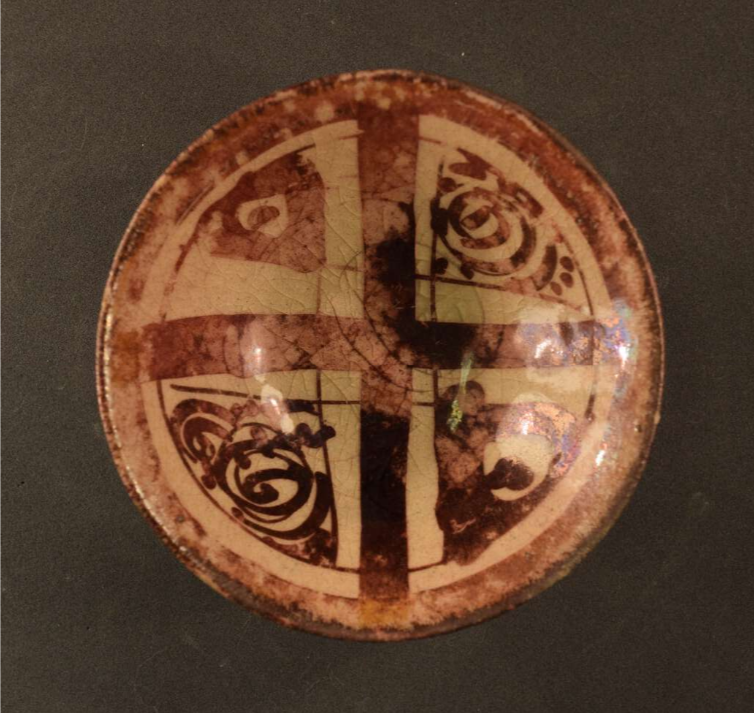
1150-1250. Syria. Ayyubid Dynasty. Bowl. Foliate ornament inside. Made of lustre (brown) glazed ceramic, pottery. Diameter: 3.20 centimetres (base) Diameter: 10 centimetres (rim) Height: 4 centimetres. Accession No. G.270.
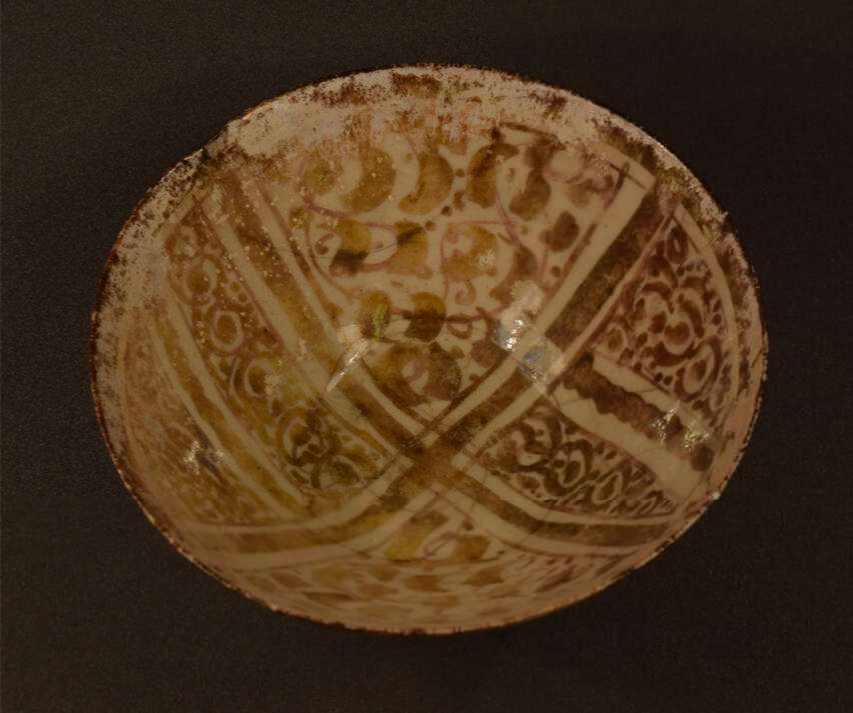
13th Century Syria. Ayyubid Dynasty. Stonepaste glazed lustre bowl, painted with scroll designs. Diameter: 17.70 centimetres. Accession No. 2002,0730.1

13th Century. Found in Fustat, Egypt. Made in Syria, possibly Raqqa. Ayybuid Dynasty. Fragment of vessel. Base sherd of bowl or dish, decorated with foliate motifs and part of six-pointed star. Foot-ring missing. .Fritware (stonepaste), Raqqa type, "Rusafa" sub-group; painted in red, blue and black under a transparent glaze.Accession No. OA+.5287.1.10.
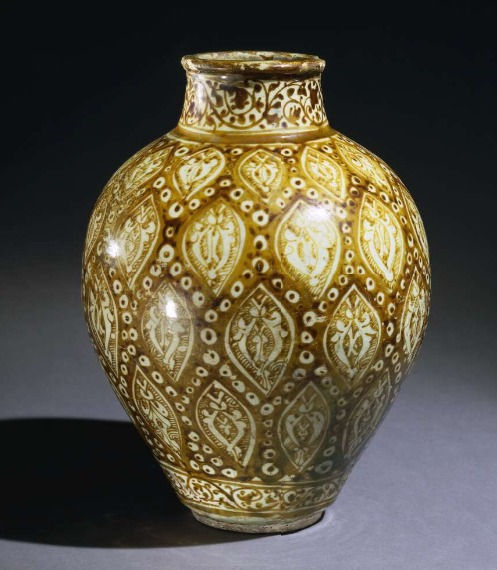
Late 13th Century. Syria or Iran. Jar made of yellow-brown painted ceramic, pottery; decorated with medallions divided by prunus blossoms. Height: 43.10 centimetres Diameter: 29.70 centimetres. Accession No. G.248.
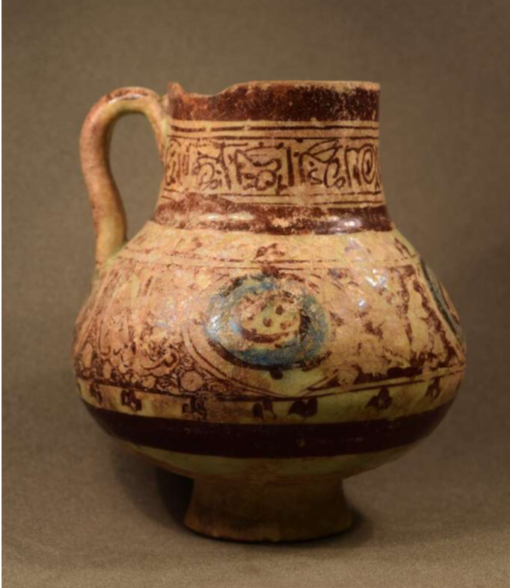
1200-1250. Syria. Ayyubid Dynasty. Jug. Foliate motifs. Made of lustre (brown) glazed ceramic, pottery. Diameter: 5.70 centimetres (base). Diameter: 7.20 centimetres (rim). Height: 15.10 centimetres. Accession No. G.268.
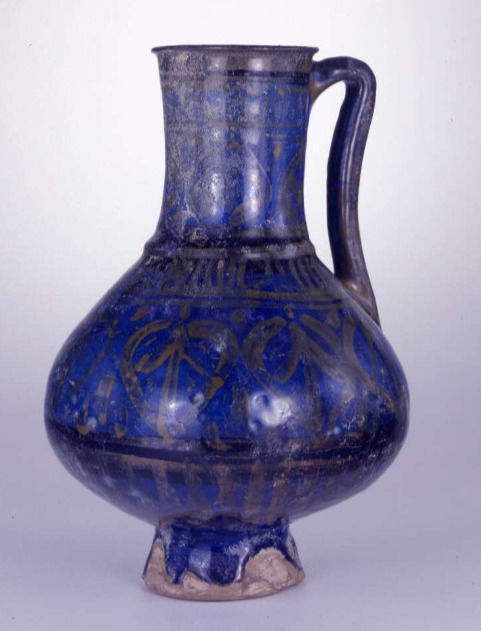
Late 13th Century. Foundin Iran. Made in Damascus, Syria. Mamluk Dynasty. Jug. Made of lustre (olive), cobalt glazed ceramic, pottery. Diameter: 7.40 centimetres (base). Diameter: 7.60 centimetres (rim). Height: 24.50 centimetres. Accession No. G.263.
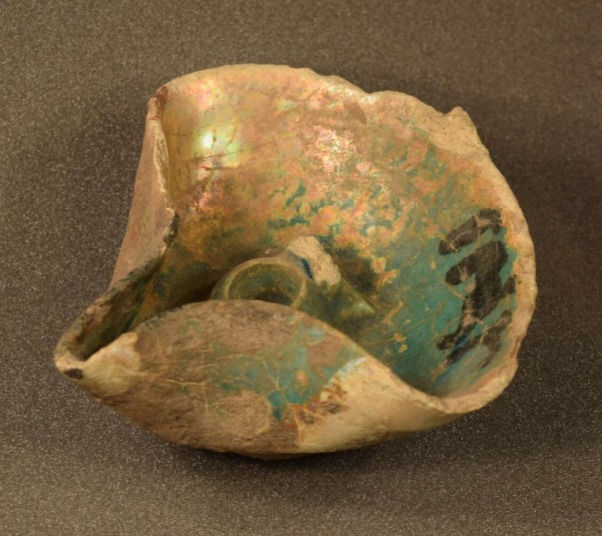
13th Century. Found in Fustat. Made in Syria. Ayyubid Dynasty. Lamp ( with spout. and bridle). With scroll decoration. Made of black painted and turquoise glazed pottery (buff). Diameter: 4.70 centimetres (base). Accession No. OA+.15919.
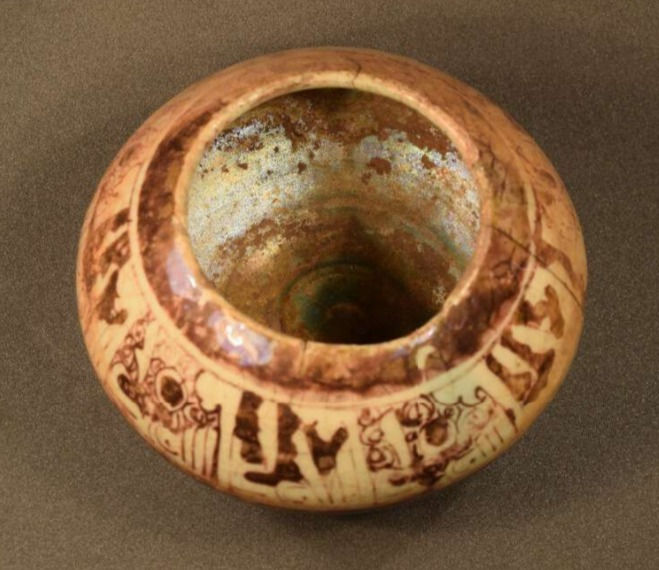
1200-1250. Syria. Ayyubid Dynasty. Pot. Pseudo-inscription. Made of lustre (brown-pink), turquoise glazed ceramic, pottery. Diameter: 8.50 centimetres (base). Diameter: 8.10 centimetres (rim).Height: 10 centimetres. Accession No. G.264.



Commenti